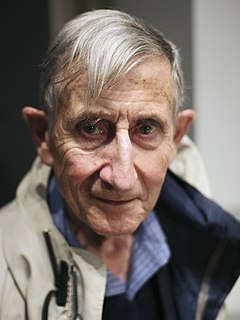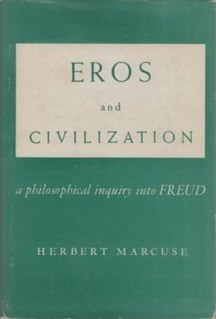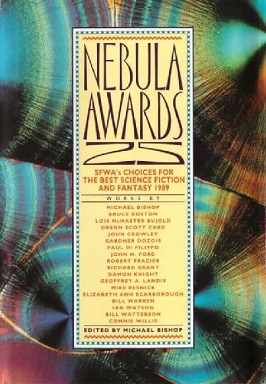Related Research Articles

Freeman John Dyson was a British-American theoretical and mathematical physicist, mathematician, and statistician known for his works in quantum field theory, astrophysics, random matrices, mathematical formulation of quantum mechanics, condensed matter physics, nuclear physics, and engineering. He was Professor Emeritus in the Institute for Advanced Study in Princeton, a member of the Board of Visitors of Ralston College, and a member of the Board of Sponsors of the Bulletin of the Atomic Scientists.

Paul Adrien Maurice Dirac was an English theoretical physicist who is regarded as one of the most significant physicists of the 20th century.

In particle physics, quantum electrodynamics (QED) is the relativistic quantum field theory of electrodynamics. In essence, it describes how light and matter interact and is the first theory where full agreement between quantum mechanics and special relativity is achieved. QED mathematically describes all phenomena involving electrically charged particles interacting by means of exchange of photons and represents the quantum counterpart of classical electromagnetism giving a complete account of matter and light interaction.

Richard Phillips Feynman was an American theoretical physicist, known for his work in the path integral formulation of quantum mechanics, the theory of quantum electrodynamics, the physics of the superfluidity of supercooled liquid helium, as well as his work in particle physics for which he proposed the parton model. For contributions to the development of quantum electrodynamics, Feynman received the Nobel Prize in Physics in 1965 jointly with Julian Schwinger and Shin'ichirō Tomonaga.

Star Maker is a science fiction novel by British writer Olaf Stapledon, published in 1937. The book describes a history of life in the universe, dwarfing in scale Stapledon's previous book, Last and First Men (1930), a history of the human species over two billion years. Star Maker tackles philosophical themes such as the essence of life, of birth, decay and death, and the relationship between creation and creator. A pervading theme is that of progressive unity within and between different civilizations. Some of the elements and themes briefly discussed prefigure later fiction concerning genetic engineering and alien life forms. Sir Arthur C. Clarke considered Star Maker to be "probably the most powerful work of imagination ever written", and Brian W. Aldiss called it "the one great grey holy book of science fiction".

Mary Beatrice Midgley was a British philosopher. A senior lecturer in philosophy at Newcastle University, she was known for her work on science, ethics and animal rights. She wrote her first book, Beast And Man (1978), when she was in her fifties, and went on to write over 15 more, including Animals and Why They Matter (1983), Wickedness (1984), The Ethical Primate (1994), Evolution as a Religion (1985), and Science as Salvation (1992). She was awarded honorary doctorates by Durham and Newcastle universities. Her autobiography, The Owl of Minerva, was published in 2005.

Infinite In All Directions (1988) is a book on a wide range of subjects, including history, philosophy, research, technology, the origin of life and eschatology, by theoretical physicist Freeman Dyson. The book is based on the author's Gifford Lectures delivered in Aberdeen in 1985. Infinite in All Directions can roughly be summarized as a treatise on the universe and humanity's role and its responsibilities.
The lectures were given in two series, and this book is accordingly divided into two parts. Part 1 is about life as a scientific phenomenon, about our efforts to understand the nature of life and its place in the universe. Part 2 is about ethics and politics, about the local problems introduced by our species into the existence of life on this planet.
Freeman Dyson is Professor of Physics at Princeton’s Institute for Advanced Study. That is a title, not a recommendation. What recommends him is his ability to communicate, not merely the interest of science and its application to human activities of every kind, but the sheer delight he takes in the universe. He loves diversity. Frequently throughout the book a passage will reveal his pleasure at being alive and seeing and thinking. He has much of Richard Feynman’s enthusiasm for the strangeness of people and things.
Dorion Sagan is an American author, essayist, fiction writer, and theorist from Madison, Wisconsin. He has written and co-authored books on culture, evolution, and the history and philosophy of science, including Cosmic Apprentice,Cracking the Aging Code, and Lynn Margulis: The Life and Legacy of a Scientific Rebel. His book Into the Cool, co-authored with Eric D. Schneider, is about the relationship between non-equilibrium thermodynamics and life.

In particle physics, the history of quantum field theory starts with its creation by Paul Dirac, when he attempted to quantize the electromagnetic field in the late 1920s. Major advances in the theory were made in the 1940s and 1950s, and led to the introduction of renormalized quantum electrodynamics (QED). QED was so successful and accurately predictive that efforts were made to apply the same basic concepts for the other forces of nature. By the late 1970s, these efforts successfully utilized gauge theory in the strong nuclear force and weak nuclear force, producing the modern standard model of particle physics.

John Clive Ward, was a British-Australian physicist. He introduced the Ward–Takahashi identity, also known as "Ward Identity". Andrei Sakharov said Ward was one of the titans of quantum electrodynamics. He made significant contributions to quantum solid-state physics, statistical mechanics and the Ising model.
Eureka is a journal published annually by The Archimedeans, the Mathematical Society of Cambridge University. It is one of the oldest recreational mathematics publications still in existence. Eureka includes many mathematical articles on a variety different topics – written by students and mathematicians from all over the world – as well as a short summary of the activities of the society, problem sets, puzzles, artwork and book reviews.

Eros and Civilization: A Philosophical Inquiry into Freud is a book by the German philosopher and social critic Herbert Marcuse, in which the author proposes a non-repressive society, attempts a synthesis of the theories of Karl Marx and Sigmund Freud, and explores the potential of collective memory to be a source of disobedience and revolt and point the way to an alternative future. Its title alludes to Freud's Civilization and Its Discontents (1930). The 1966 edition has an added "political preface".
Adolf Grünbaum was a German-American philosopher of science and a critic of psychoanalysis, as well as Karl Popper's philosophy of science. He was the first Andrew Mellon Professor of Philosophy at the University of Pittsburgh from 1960 until his death, and also served as Co-Chairman of its Center for Philosophy of Science, Research Professor of Psychiatry, and Primary Research Professor in the Department of History and Philosophy of Science. His works include Philosophical Problems of Space and Time (1963), The Foundations of Psychoanalysis (1984), and Validation in the Clinical Theory of Psychoanalysis (1993).

The Character of Physical Law is a series of seven lectures by physicist Richard Feynman concerning the nature of the laws of physics. Feynman delivered the lectures in 1964 at Cornell University, as part of the Messenger Lectures series. The BBC recorded the lectures, and published a book under the same title the following year; Cornell published the BBC's recordings online in September 2015. In 2017 MIT Press published, with a new foreword by Frank Wilczek, a paperback reprint of the 1965 book.

The Scientist as Rebel is a 2006 book by theoretical physicist Freeman Dyson. A few of the twenty-nine chapters in the book deal with the interactions of religion and science.

The Pleasure of Finding Things Out is a collection of short works from American physicist Richard Feynman, including interviews, speeches, lectures, and printed articles. Among these is his famous 1959 lecture "There's Plenty of Room at the Bottom", his report on the Space Shuttle Challenger disaster, and his speech on scientific integrity in which he coined the term "cargo cult science". The original foreword was written by Freeman Dyson.

The Meaning of It All: Thoughts of a Citizen Scientist is a non-fiction book by the Nobel Prize-winning physicist Richard Feynman. It is a collection of three previously unpublished public lectures given by Feynman in 1963. The book was first published in hardcover in 1998, ten years after Feynman's death, by Addison–Wesley. Several paperback and audiobook editions of the book have subsequently been published.
Jagdish Mehra was an Indian-American historian of science.

Nebula Awards 25 is an anthology of award winning science fiction short works edited by Michael Bishop, the third of three successive volumes published under his editorship. It was first published in hardcover and trade paperback by Harcourt Brace Jovanovich in April 1991.

Philosophical Essays on Freud is a 1982 anthology of articles about Sigmund Freud and psychoanalysis edited by the philosophers Richard Wollheim and James Hopkins. Published by Cambridge University Press, it includes an introduction from Hopkins and an essay from Wollheim, as well as selections from philosophers such as Ludwig Wittgenstein, Clark Glymour, Adam Morton, Stuart Hampshire, Brian O'Shaughnessy, Jean-Paul Sartre, Thomas Nagel, and Donald Davidson. The essays deal with philosophical questions raised by the work of Freud, including topics such as materialism, intentionality, and theories of the self's structure. They represent a range of different viewpoints, most of them from within the tradition of analytic philosophy. The book received a mixture of positive, mixed, and negative reviews. Commentators found the contributions included in the book to be of uneven value.
References
- ↑ Dyson, Freeman (2013-07-10). From Eros to Gaia. ISBN 978-0-307-83102-6.
- ↑ "Review of From Eros to Gaia by Freeman Dyson". Bulletin of the Atomic Scientists. Educational Foundation for Nuclear Science, Inc. 49 (5): 54–55. June 1993.
- ↑ Dyson, Freeman (2013). "Preface". From Eros to Gaia. ISBN 978-0307831026.
- ↑ "Review of From Eros to Gaia by Freeman Dyson". Kirkus Reviews. 1992.
- ↑ "Review of From Eros to Gaia by Freeman J. Dyson". Publishers Weekly. 4 May 1992.